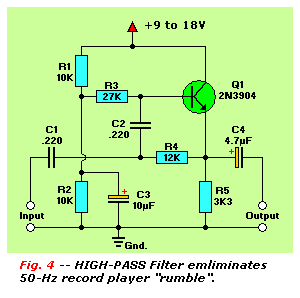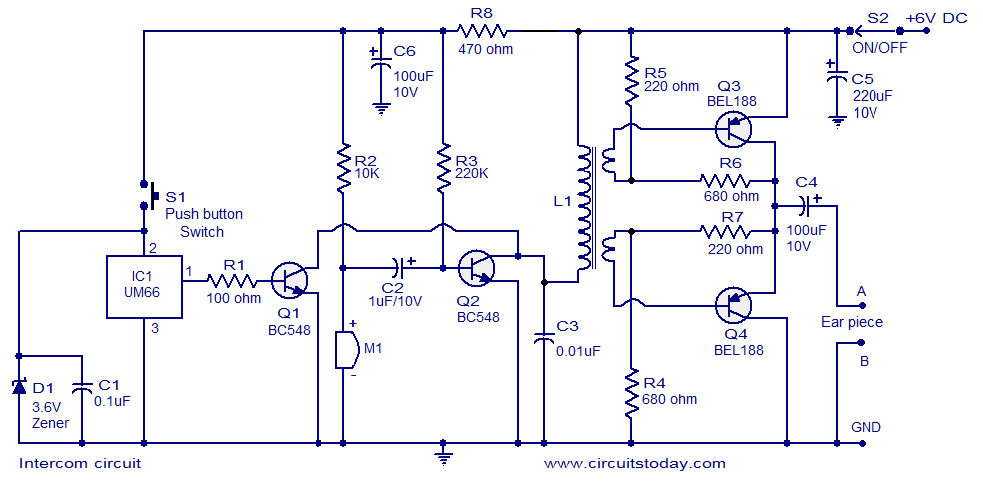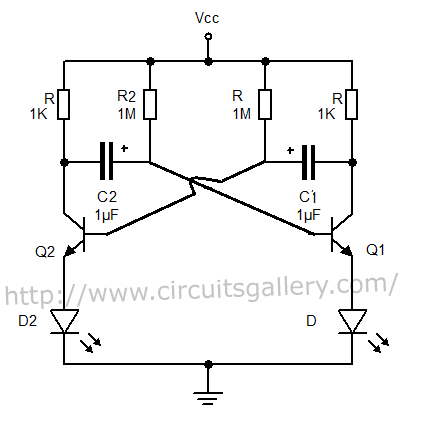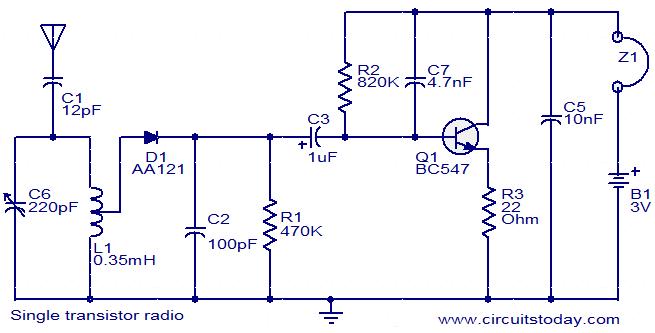
In-Circuit Transistor Tester
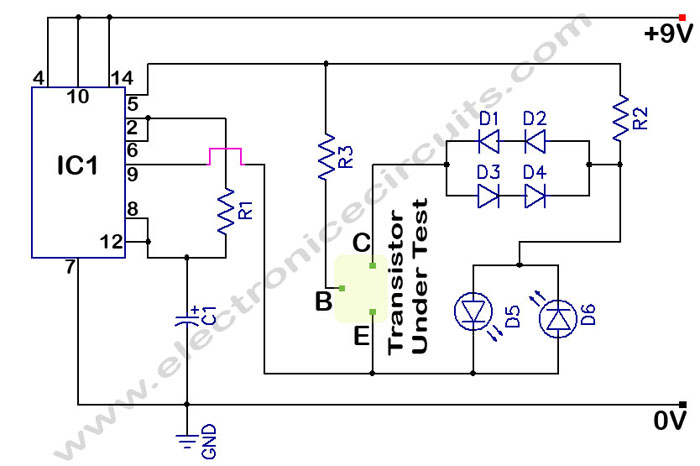
The circuit is a transistor tester schematic that indicates the condition of a transistor using two LEDs. It is designed to test a good NPN transistor.
The transistor tester circuit operates by utilizing two light-emitting diodes (LEDs) to provide a visual indication of the transistor's functionality. The circuit typically incorporates a power supply, resistors, and a few other passive components to ensure proper operation.
When an NPN transistor is inserted into the designated socket of the circuit, the tester applies a small current through the base of the transistor. If the transistor is functioning correctly, it will allow a larger current to flow from the collector to the emitter, illuminating one of the LEDs, which indicates that the transistor is in good condition.
In contrast, if the transistor is faulty or damaged, the circuit will not allow the current to flow effectively, resulting in the other LED lighting up or no LEDs lighting at all. This simple yet effective design enables users to quickly determine the operational status of NPN transistors without the need for complex testing equipment.
The circuit can be enhanced with additional features such as a switch to select between testing NPN and PNP transistors, or the inclusion of a digital display for more precise readings. Furthermore, incorporating a variable resistor can allow adjustments to the current applied to the base, accommodating different transistor specifications. Overall, this transistor tester circuit provides an efficient and straightforward method for evaluating the health of transistors in various electronic applications.In Circuit Transistor Tester Schematic Here is a circuit that can indicate the condition of a transistor by using two LEDs. A good NPN transistor. 🔗 External reference
The transistor tester circuit operates by utilizing two light-emitting diodes (LEDs) to provide a visual indication of the transistor's functionality. The circuit typically incorporates a power supply, resistors, and a few other passive components to ensure proper operation.
When an NPN transistor is inserted into the designated socket of the circuit, the tester applies a small current through the base of the transistor. If the transistor is functioning correctly, it will allow a larger current to flow from the collector to the emitter, illuminating one of the LEDs, which indicates that the transistor is in good condition.
In contrast, if the transistor is faulty or damaged, the circuit will not allow the current to flow effectively, resulting in the other LED lighting up or no LEDs lighting at all. This simple yet effective design enables users to quickly determine the operational status of NPN transistors without the need for complex testing equipment.
The circuit can be enhanced with additional features such as a switch to select between testing NPN and PNP transistors, or the inclusion of a digital display for more precise readings. Furthermore, incorporating a variable resistor can allow adjustments to the current applied to the base, accommodating different transistor specifications. Overall, this transistor tester circuit provides an efficient and straightforward method for evaluating the health of transistors in various electronic applications.In Circuit Transistor Tester Schematic Here is a circuit that can indicate the condition of a transistor by using two LEDs. A good NPN transistor. 🔗 External reference
Warning: include(partials/cookie-banner.php): Failed to open stream: Permission denied in /var/www/html/nextgr/view-circuit.php on line 713
Warning: include(): Failed opening 'partials/cookie-banner.php' for inclusion (include_path='.:/usr/share/php') in /var/www/html/nextgr/view-circuit.php on line 713
